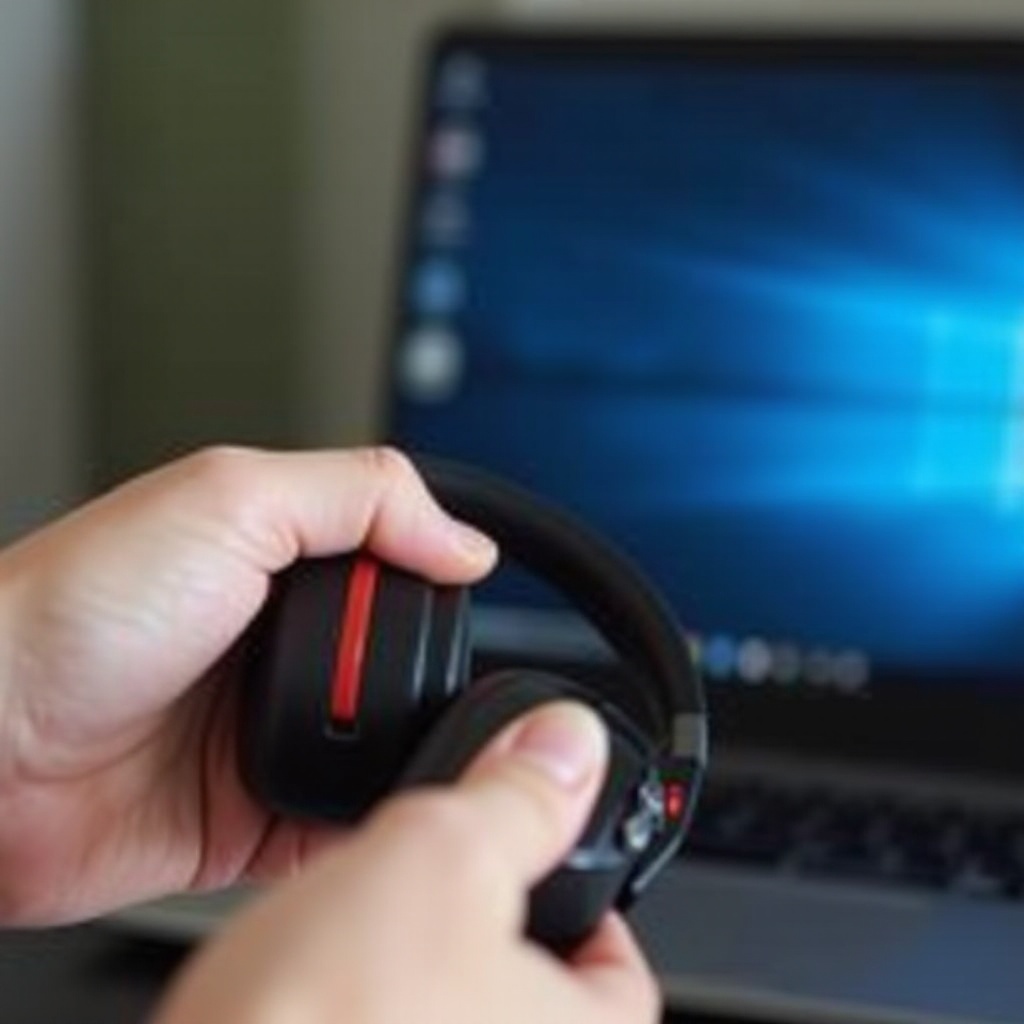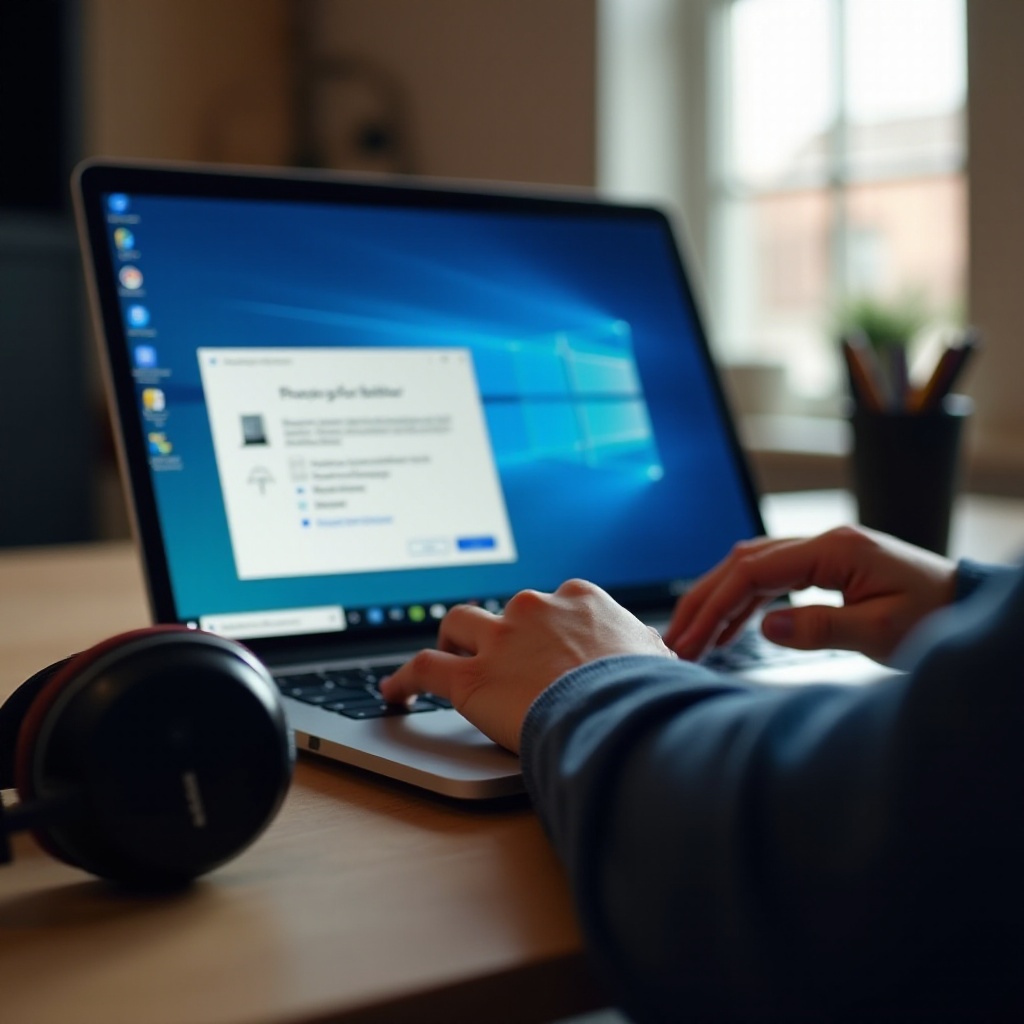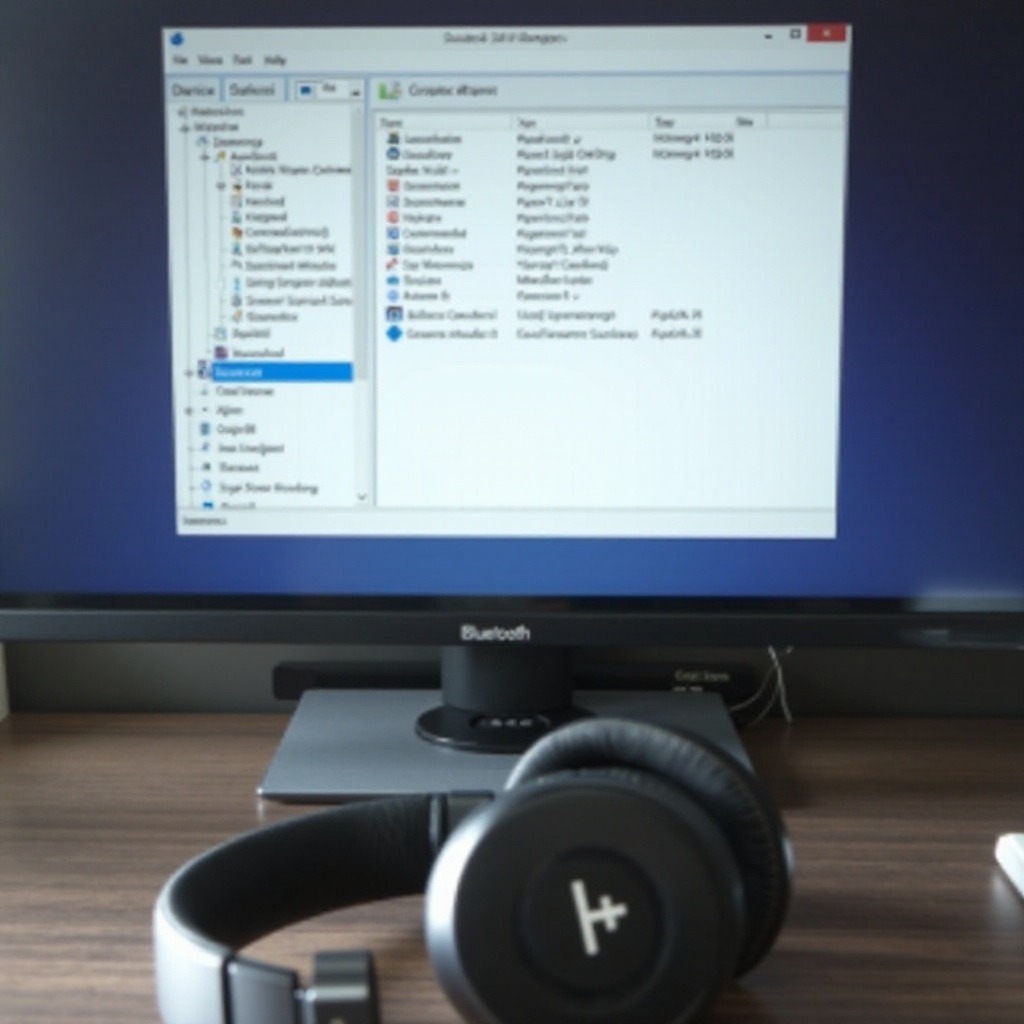Introduction
Bluetooth headphones are a convenient way to enjoy wireless audio on your Windows 10 device. However, it can be incredibly frustrating when your Bluetooth headphones won’t show up on Windows 10. Whether it’s a software glitch or hardware issue, this problem is surprisingly common.
In this guide, we’ll help you navigate through several potential fixes for when your Bluetooth headphones aren’t showing up on Windows 10. By the end, you should be able to enjoy a seamless audio experience once again.

Initial Checks
Before diving into more complex solutions, start with some basic initial checks:
- Make sure your Bluetooth headphones are charged and turned on.
- Verify that your Windows 10 computer’s Bluetooth is enabled. You can do this by going to Settings > Devices > Bluetooth & other devices.
- Ensure your headphones are in pairing mode, which is often indicated by a flashing light.
These initial steps can sometimes resolve minor issues quickly.
Ensuring Bluetooth Compatibility
Not all Bluetooth devices are compatible with every device. To ensure compatibility:
- Verify Device Compatibility: Check if your Bluetooth headphones are compatible with Windows 10. Refer to the user manual or the manufacturer’s website for this information.
- Check Windows 10 Version: Make sure your Windows 10 is updated to the latest version. Go to Settings > Update & Security > Windows Update.
Compatibility issues can often be the root cause of connectivity problems.
Updating Bluetooth Drivers
Outdated or corrupted Bluetooth drivers can prevent your headphones from pairing with Windows 10:
- Open Device Manager: Right-click the Start button and select Device Manager.
- Locate Bluetooth Drivers: Find ‘Bluetooth’ in the list and expand it.
- Update Driver: Right-click on your Bluetooth adapter and select ‘Update Driver’. Choose ‘Search automatically for updated driver software’.
Updating your drivers can often solve connectivity issues and enhance performance.
Altering Bluetooth Settings in Windows 10
Adjusting some Bluetooth settings can sometimes help fix visibility issues:
- Open Settings: Go to Settings > Devices > Bluetooth & other devices.
- Remove Devices: Remove any unnecessary paired devices that might conflict with your Bluetooth headphones.
- Add Bluetooth Device Again: Click ‘Add Bluetooth or other device’ > ‘Bluetooth’, and try to pair your headphones again.
Altering these settings can help your device detect your Bluetooth headphones more easily.
Running the Windows 10 Troubleshooter
Windows 10 comes with a built-in Troubleshooter tool to help fix common problems:
- Access Troubleshooter: Go to Settings > Update & Security > Troubleshoot.
- Run Troubleshooter: Click on ‘Bluetooth’ and then run the troubleshooter. Follow the on-screen instructions.
The troubleshooter can automatically detect and fix specific issues, saving you time.

Restarting Bluetooth Services
Restarting Bluetooth-related services can resolve many connectivity problems:
- Open Services: Press Win + R, type ‘services.msc,’ and hit Enter.
- Restart Bluetooth Services: Find ‘Bluetooth Support Service,’ right-click, and select Restart.
This step can refresh your Bluetooth functionality, making it easier to connect devices.
Managing Bluetooth Interference and Distance Issues
Bluetooth connectivity can be affected by interference and distance:
- Reduce Interference: Move your headphones closer to the Windows 10 device. Remove any electronic devices that might interfere, such as microwaves or Wi-Fi routers.
- Check Battery Level: Ensure your headphones’ battery level is sufficient.
Managing interference and distance can improve the stability of your Bluetooth connection.
Checking for Software Conflicts
Some software applications may interfere with your Bluetooth connection:
- Boot in Safe Mode: Boot your computer in Safe Mode to see if the problem persists. If your headphones show up, then a third-party application might be causing the issue.
- Disable Potential Conflicts: Look for software that manages wireless connections and disable them temporarily.
Identifying and managing software conflicts can help resolve connectivity issues.

Using External Bluetooth Adapters
If your computer’s built-in Bluetooth isn’t working correctly:
- Purchase an External Adapter: Consider an external USB Bluetooth adapter. These are usually plug-and-play and can offer better performance.
- Install Adapter: Follow the manufacturer’s instructions for installation.
Using an external adapter can be an easy workaround to persistent Bluetooth connectivity issues.
Conclusion
When your Bluetooth headphones won’t show up on Windows 10, it can disrupt your workflow and leisure time. By performing initial checks, ensuring compatibility, updating drivers, adjusting settings, running the troubleshooter, restarting services, managing interference, checking for software conflicts, and considering external adapters, you can solve these common issues effectively.
With these comprehensive steps, you’ll hopefully solve your Bluetooth connectivity problems and go back to enjoying your headphones without hassle.
Frequently Asked Questions
How do I make my Bluetooth headphones discoverable on Windows 10?
Ensure your headphones are in pairing mode, which is usually done by holding the power button until a flashing light appears. Go to Settings > Devices > Bluetooth & other devices > Add Bluetooth or other device and select Bluetooth to initiate discovery.
Why is my Windows 10 not detecting my Bluetooth headphones?
This issue can result from outdated drivers, incorrect settings, or Bluetooth interference. Following the outlined steps in this guide will help in identifying and resolving the issue.
Can outdated drivers cause Bluetooth headphone connectivity issues on Windows 10?
Yes, outdated or corrupted drivers can cause connectivity issues. Updating to the latest drivers often resolves such problems and improves overall performance.
